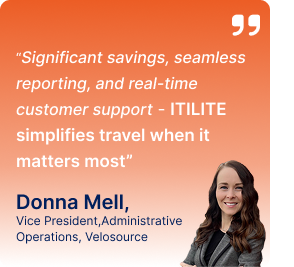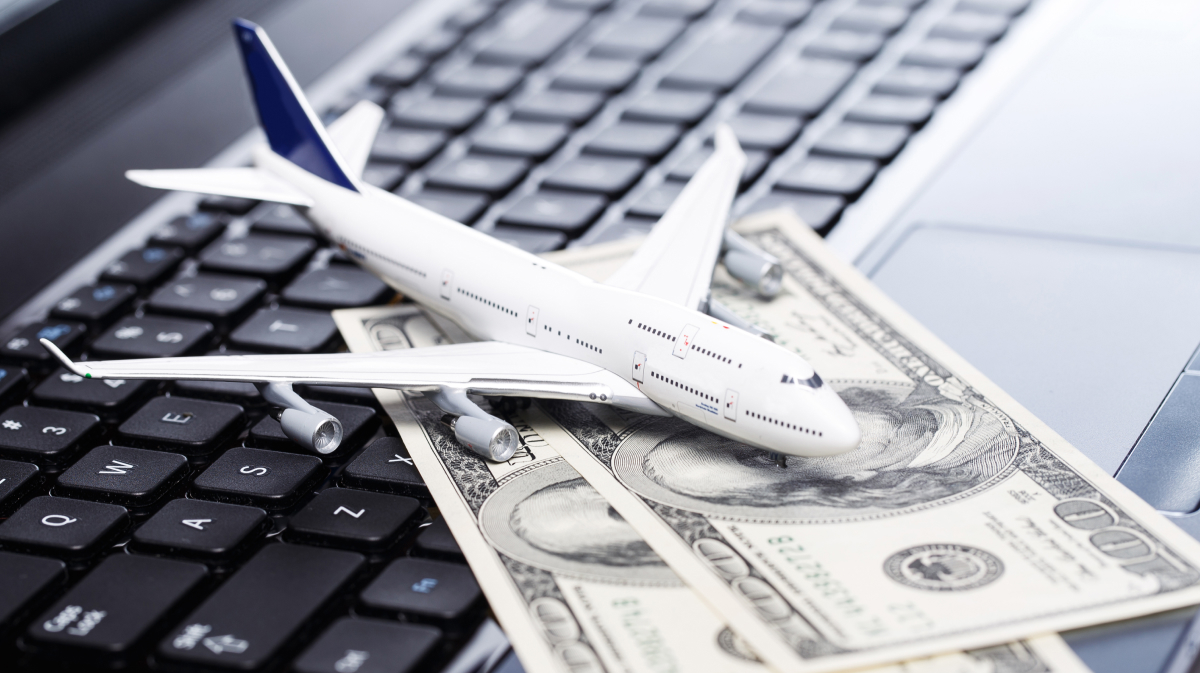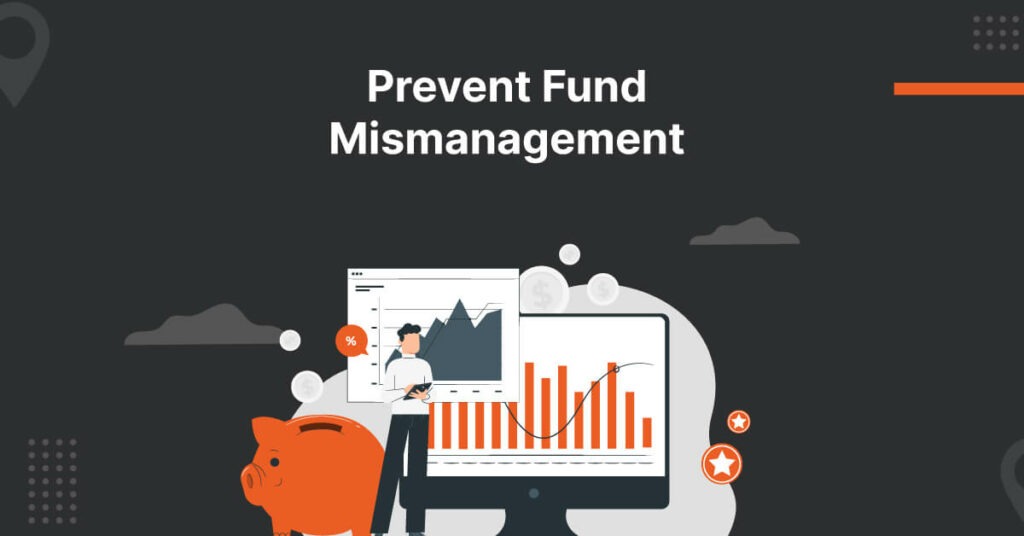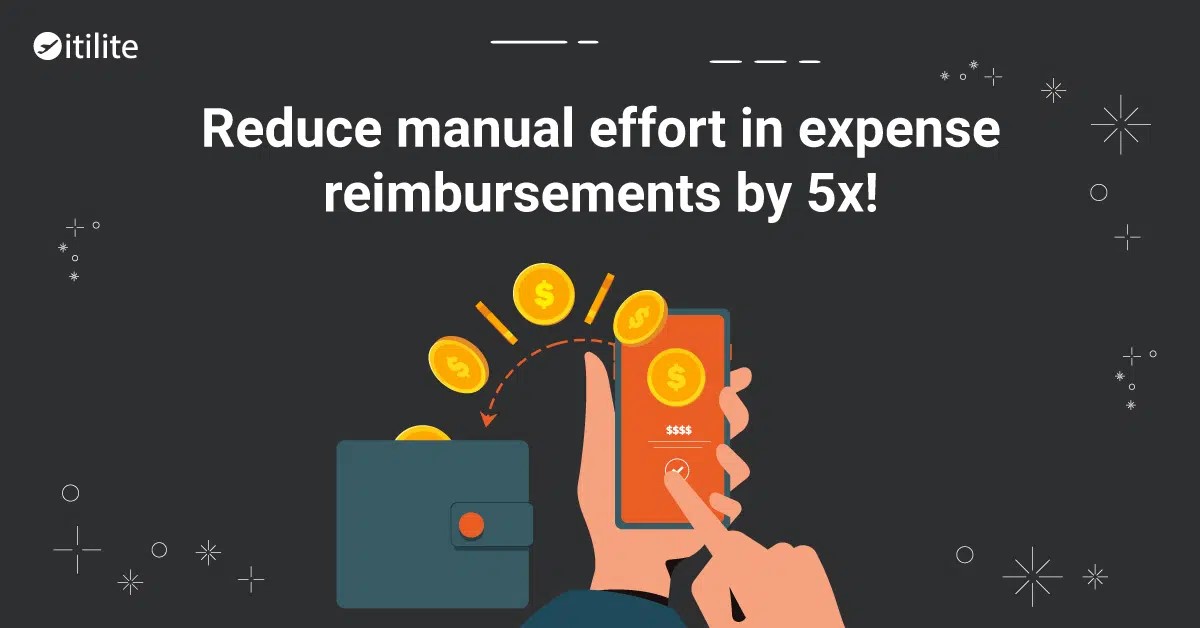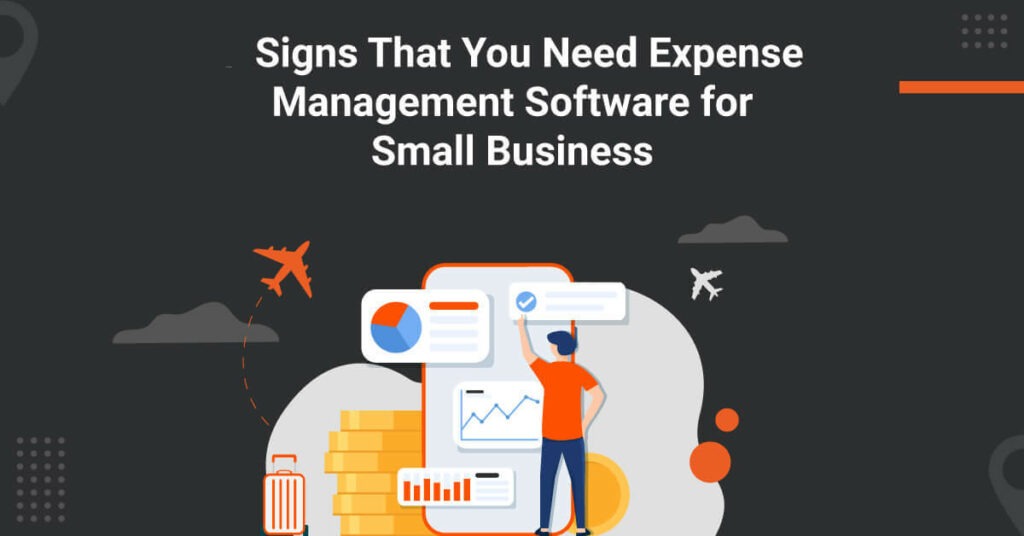
Small businesses are the heart of the US economy, constituting around 99.9% of all businesses. However, every small business has challenges at its inception, be it limited funding, brand management, talent acquisitions, or customer outreach. One of the major challenges among these is expense management.
In the earlier days, most small businesses preferred to manage their expenses the conventional way – paper-based expense filing or spreadsheets. However, companies these days have realized the importance of technology in managing their expenses.
Enter expense management software! According to Digital Journal, the market size of expense management software is expected to grow from $3215.8 Mn. in 2019 to $7306 Mn. in 2027 at a CAGR of 11.5%.
An expense management software for small business overcomes all challenges posed by the paper-based process by automating most tasks and eliminating errors. If you are still using the conventional ways of expense filing, here are some signs that you need to adopt expense management solution for your small business.
1. You are finding it hard to scale the expense process
When an SME is at its nascent stages, the overall expenses are limited. Hence, it makes the owners and financial team believe they can handle expenses on paper or spreadsheets. However, as the business grows (which in the case of small businesses is rapid), the paper stock gets building up. Soon enough, you have a room full of expense reports.
On the other hand, most expense management software for small business offer cloud-based storage that can be scaled as per the business requirements. So, as your business grows, you don’t need to find more cabinet space for more paperwork. The expense reports, even five years older, can be downloaded from the software with the click of a button.
2. There is a delay from the accounts payable team
A conventional expense management system makes the accounts payable process time-consuming and inefficient. It makes the accounts team follow up with the employees regularly for expense filing and the management for approvals. Moreover, they need to manually go through all the files and process each one individually.
An expense management software for small business expedites expense processing by automating the approval and reimbursement process. The employees can just file their expenses on the expense reimbursement software, which gets sent automatically for approval. The approvers get a notification of the expenses and can approve them on the same software before it gets forwarded to the accounts team. As the employees can choose the category in the expense management software, the accounts team doesn’t need to filter them out in the spreadsheets.
3. Errors are getting out of control
Are you experiencing an unacceptable number of errors in your expense process? Even a big enterprise like JP Morgan had to experience a loss of $6 Bn. due to an error using Excel. It’s safe to say that a small business would not be able to recover from such a substantial loss.
A manual expense system is always prone to human errors as the finance team has to enter the data manually, leading to duplication, discrepancies, and more.
However, if you adopt expense management software for small business, all the data can be pulled out directly from the software. All the finance team needs to do is process the expenses for reimbursement.
4. Employees are often filing out-of-policy expenses
An expense policy is the most integral part of the expense management process. However, what’s the point of having an expense policy when the employees find it hard to adhere to it?
In a manual expense system, employees need to go through the policy before booking their travel. This leads to negligence on their part, which in turn, means filing expenses that are out of policy.
By opting for expense management software for small business, employees get real-time visibility of expense policy at the time of expense filing itself. So, when they file expenses, a prompt opens showing that the expense is out of policy. This makes the job of employees, approvers, and the finance team a lot easier.
Moreover, the software can also conduct automated travel and expense audit to help you avoid duplicate expenses and weekend spending.
5. Expenses management is proving to be expensive
Is managing the company’s expenses proving to be more expensive than you planned? A manual expense filing system keeps costing the company more as the business process expands.
Firstly, as more and more expenses are filed every month, the cost of paper and stationary increases to a limit you can’t afford. Moreover, you need to expand the storage space for storing all those records. Lastly, the more your expense process grows, the more finance people you need to handle them.
On the other hand, expense management software for small business eliminates all these expenses related to manual filing. As there is no need to buy paper, storage costs also become non-existent. You just need to pay a definite cost per active user, and you are good to go.
6. A lot of employee time is getting wasted
According to a GBTA survey, it takes an employee 20 mins to file an expense report. So, if an employee files even 2 reports in a month, 40 minutes per employee are wasted in expense filing. Now, multiply this by the number of employees that file expense reports.
The time employees put in for filing expense reports hampers not only their productivity but also the company’s time. Not to mention the stress of manually filing an expense report. We all have had to file the reports manually, keep the physical receipts with us to be attached to the report, and then send it for approval. Moreover, if we lost the receipts, filing expenses was just not possible.
An expense management app or software for small business not only minimizes the expense filing time but also makes the lives of the employees a lot easier. The employees can upload the receipts directly on the expense management mobile app or browser in real time.
Moreover, the best expense management solution providers in the market offer the auto-scan feature where the app reads the receipt details, so you don’t have to fill the details manually.
7. Not able to prevent data security issues
Data security is a major concern for a company using a paper-based expense system. Employees can lose critical financial documents due to a lack of security or poor organization. Moreover, there is no trace of the person responsible as the data can be compromised at any time.
With expense management software, only authorized users can access the expense data. You can implement access controls and limit access to specific files. Moreover, expense management tool also enables visibility of who accessed what file and when.
Hence, you can ensure state-of-the-art data security with the help of expense management for small business.
8. You are not getting actionable insights
Your finance team needs insights into the overall organizational expenses to forecast and prepare the budget for the next fiscal term. They require metrics like overall monthly spending, spending by departments, and spending by expense categories. However, getting such detailed analytics if you manage expenses with a spreadsheet can be highly laborious. Your finance team must spend extra time and human resources compiling and analyzing expense reports. Moreover, manual processing can cost a lot of money.
Alternatively, if you manage your expenses with a tech-forward expense management software for small business, you can get detailed insights without any additional effort. Such software applications have in-built analytics functionality that summarizes the entire and presents it through interactive dashboards and comprehensive reports.
9. Tracking miles is difficult
Mileage tracking involves keeping track of each mile an employee travels for work purposes with a personal vehicle. You need mileage tracking to reimburse employees because they used their vehicles for the company’s requirements.
In a spreadsheet-based expense management system, the employees manually enter the total miles they have traveled. However, a manual entry system leaves a wide scope for errors and fraud. The employees might be unable to track their miles accurately and enter an inflated or deflated amount. Or they might increase the miles on purpose to claim more reimbursement.
However, expense management software for small business offers an automatic mileage tracking feature. So, whenever an employee files for mileage reimbursement, they just have to enter the destinations, and the software will auto-detect the shortest route. This can help you avoid inflated claims and save money.
10. Data sharing is tedious
Various departments in the company use different software applications to manage data. However, such applications cannot function in isolation because the data needs to be shared and utilized for multiple other purposes. For instance, the employee details stored in the HRMS need to be shared with expense software to create each employee’s profile. Or the ERP systems need data points from expense management tool for accounting purposes.
If you manage your expenses with a spreadsheet, data sharing can be difficult because it cannot integrate with HRMS, ERP, or any other software application. So, you have to update new each record in different software manually.
In contrast, expense management software for small business offers seamless integration. With such integrations, you can automatically transfer data from one software to another, saving time and effort.
Solve all your expense tracking challenges with a best-in-class, automated small business expense management software in your pocket.
Final Note
If you are experiencing any of the issues mentioned above with your current manual expense management system, it would be a good business decision to try out expense management software for small business.
Itilite expense management software offers employees an easy-to-use expense filing platform with an auto-scan feature, real-time policy visibility, and more. Moreover, finance professionals get an error-free process with automated audits, fraud detection, and made-to-order reporting.
Try out the advanced features of itilite expense management software before making a decision.
Frequently Asked Questions
Small businesses must manage common business expenses, such as operational and employee-related expenses. Effective expense management for small businesses involves tracking, categorizing, and optimizing these various expenditures to maintain financial health and profitability.
Small businesses can easily track expenses using dedicated expense reporting software for small businesses. These software solutions offer user-friendly interfaces for inputting expenses, categorizing them, and generating comprehensive reports. This simplifies the process and equips you with valuable insights into spending patterns.
Small businesses can reduce expenses by hiring a Travel Management Company (TMC). TMCs use robust expense management software to help file expenses, create reports, track expenses, and flag non-compliant or fraudulent payments.

